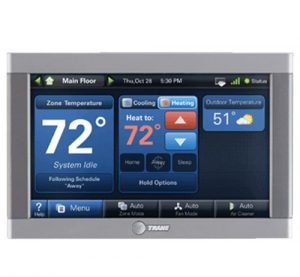Your gas furnace is a vital part of your home. It provides you and your family with warmth and comfort during the winter months. Thus, ensuring it’s in tip-top shape throughout the season is important.
The furnace exhaust pipe is a key component in every heating system. It vents out harmful gasses from your home, preventing potential exposure as well as accidental fires.
When problems arise in the furnace exhaust pipe, it can put you at risk of carbon monoxide poisoning and other hazards. Unfortunately, some problems such as corrosion and wear and tear are inevitable. Thus, knowing what course of action to take when something goes wrong is important.
This article will teach you more about furnace exhaust pipes, exhaust gasses, and the common problems that can develop on your furnace flue pipe.
What is a Furnace Exhaust Flue Pipe and Why Do You Need It?
To put it simply, the furnace flue pipe or exhaust pipe removes toxic gasses from your home by venting them all outside. Flue pipes are made of fire-resistant metals and are insulated, to keep excess heat from escaping.
Burning gas is one of the many ways heating appliances produce warm air. During the combustion process, hot gasses that are potentially dangerous if inhaled are created.
In a typical gas furnace, the byproducts created are usually water vapor and carbon dioxide. Unfortunately, even high-efficiency furnaces can’t process combustion gasses entirely. As a result, it creates a wide variety of byproducts such as carbon monoxide, sulfur dioxide, nitrogen dioxide, and hydrocarbons.
These byproducts are extremely dangerous. And since they are odorless and invisible, it can be tricky to identify a leak in your home.
The furnace exhaust flue ensures that poisonous combustion gasses from your furnace’s combustion chamber don’t pollute your home. The heat exchanger separates the combustion gasses from the warm air, sending clean air into your home’s air vents and the toxic gasses into the flue.
Keep the batteries in your carbon monoxide detectors charged at all times. That way, you can catch a carbon monoxide leak before it becomes life-threatening.
How Does an Exhaust Flue Work?
So, we’ve talked about why you need a furnace exhaust pipe. Let’s take a closer look at how an exhaust flue works.
Most furnaces use a component called a damper to regulate airflow and the air pressure inside the flue pipe. It creates the draft that pulls the flue gasses up the exhaust pipes, releasing them outdoors. It also prevents the flue gasses from re-entering your house.
Exhaust gas possesses a much higher temperature than fresh air from the outside. They also have different pressure levels, which makes it possible for the furnace to easily push out the exhaust gas from the combustion chamber into the flue.
You can connect the furnace exhaust pipe to a chimney or outlet point, depending on your state’s building codes and regulations.
When there’s insufficient pressure inside the exhaust pipe, it can restrict airflow, making it difficult for toxic gasses to exit your home. You might want to contact an HVAC technician to diagnose and fix your flue problems.
Exhaust Flue vs Chimney: What’s the Difference?
The flue pipe is simply where furnace byproducts exit. It often goes through the chimney and out the roof. You can connect it to several heating appliances in your home. A few examples include the furnace, stove, broiler, or even an indoor grill.
A chimney is a structure that encases the flue pipe. This is sometimes why the flue is referred to as the chimney liner. It’s possible to have an unlined chimney; however, this is generally discouraged.
Most chimneys are made of porous brick that provides combustion byproducts spaces to accumulate. This can be a major fire hazard and can also cause toxic gas pollution in your home.
To reduce the risk of fire and prevent excessive accumulation of combustion byproducts, chimneys are lined with fire-resistant metal sheets called chimney flue liners or pipes. These terms are often used interchangeably.
Common Exhaust Flue Problems
All heating and cooling systems face damage and deterioration over time, this includes your furnace’s exhaust pipe. Below is a list of common exhaust flue issues that you might encounter as a homeowner:
Problem 1: Furnace is Incompatible with Flue Pipe
When installing a new furnace at home, it’s important to check if the model you plan to install is compatible with your existing flue. Flues and furnaces come in various shapes and sizes. If your flue and furnace don’t have compatible configurations, it can prevent your furnace from running efficiently. It also raises your risk of carbon monoxide poisoning.
Replacing older furnaces doesn’t have to be difficult. To make the process easier for you, contact a professional HVAC technician. An expert can inspect your existing chimney and flue system to determine the appropriate furnace type and size for your home.
Problem 2: Backdrafting
Sometimes, heating appliances can experience a reverse flow of gas also known as “backdraft.” This can cause combustion byproducts to enter your home, polluting the air you breathe.
A rapid rate of air expulsion into the outdoors produced by exhaust fans, fireplaces, and dryers can result in unusually low indoor air pressure. This can overpower the pressure differential that supports the venting of toxic byproducts through the roof.
As a result, the harmful byproducts are sucked back into your home, endangering everyone inside. Backdrafting can also be brought on by incorrectly constructed flues or flue obstructions.
Problem 3: Joint Leaks
Furnace flues use a special material to seal their connections with other components and sections. For some systems, aluminum flashing and high-temperature silicone caulk are used to attach joints and prevent poisonous combustion gasses from leaking.
Over time, these seals can deteriorate and cause leaks to form on your flue pipes. If you’re handy with tools, you can probably patch up these leaks with the same aluminum flashing and silicone caulk. Regardless, it’s always better to ask a professional to assist you with fixing a leak.
Corrosion of the galvanized metal of your furnace flue can also cause leaks to form near the joints. Acidic compounds generated by the combustion process can eat away at your exhaust flue.
Regular maintenance and inspection can help you spot the earliest signs of leaking and corrosion on your exhaust flue before it becomes irreparable. Contact a professional today to schedule an appointment.
Problem 4: Cracking
Excessive heat can cause your flue pipe to crack. Metal expands when it’s exposed to heat and retracts when heat is removed.
Certain steel grades are much more pliant than others, making them less likely to crack when exposed to high temperatures.
However, steel grades that are harder (such as the ones used in exhaust flue pipes) have a higher likelihood of cracking.
Accidentally hitting your furnace flue with a heavy object may also cause it to crack. Similar to joint leaks, cracks mean that harmful flue gasses can seep into your home and affect everyone inside.
Keeping Harmful Gasses Out of Your Home
A furnace flue ensures your home is free of harmful contaminants in the air. It also reduces your risk of potential fires and other accidents. If you’re a homeowner or are planning to become one, it’s important that you’re familiar with the different components that keep your HVAC systems running efficiently.
Without a furnace flue, pollutants can easily corrupt the air inside your house, reducing the overall air quality and safety. Carbon monoxide leaks, for instance, can cause serious tissue damage and even death when there’s overexposure.
Problems such as cracks, leaks, and clogs are inevitable furnace flue dysfunctions that develop due to wear and tear or a lack of proper maintenance. To avoid experiencing the same situation, it’s important to schedule regular inspections with a licensed HVAC technician.
When it comes to furnace flue problems, an HVAC technician can help you find the best route of action to resolve your situation. These professionals have years of experience that help them efficiently diagnose and solve various furnace-related dysfunctions.
Additionally, it can add a few extra years to your furnace flue’s life expectancy.
Let Us Help You Solve Your Furnace Flue Pipe Problem!
Is your furnace exhaust pipe giving you trouble? Here at BelRed, we understand how important your heating system is in keeping your family safe and comfortable all winter long. Thus, we strive to provide our clients with high-quality heating, cooling, and plumbing solutions throughout Mukilteo, WA!
Our technicians are trained in the latest techniques to keep up with industry and customer standards. We offer services ranging from furnace installation to HVAC system maintenance or repair.
Whether it’s detecting a harmful gas leak in your home or fixing a misaligned joint in your furnace flue, our experts will know exactly what to do!
Contact us at (855) 345-6161
Our office is open from Monday to Saturday. Contact us today to book an appointment or get a free estimate.







